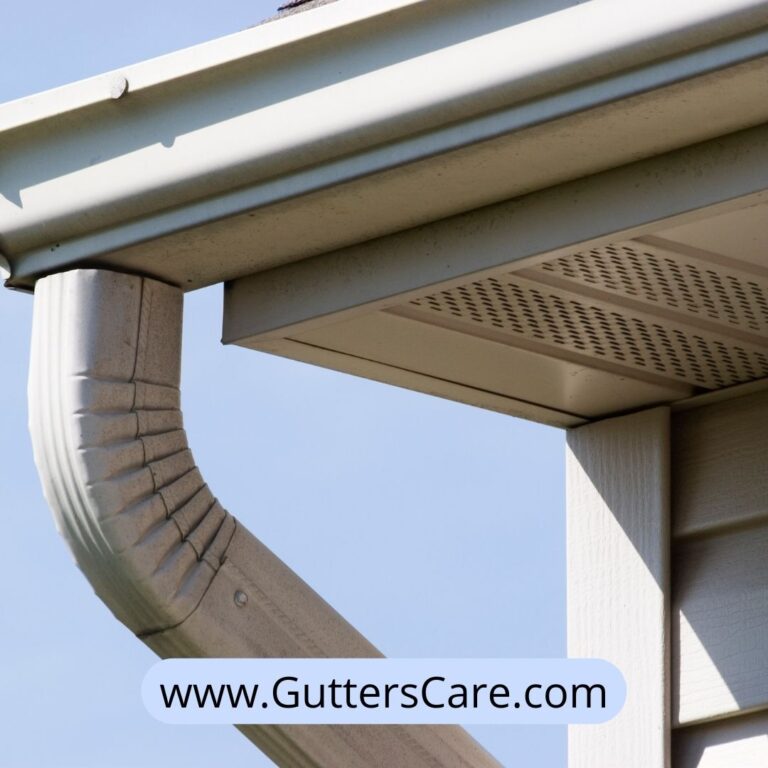How to Choose the Best Rain Gutters for Your Home: Step-by-Step Guide
Rain gutters are an essential part of any home, but they can be confusing to choose and install. This comprehensive guide will walk you through everything you need to know about rain gutters, from choosing the right type to installing them yourself.
- What are rain gutters?
- Types of rain gutters
- Choosing the right rain gutters
- Installing rain gutters
- Benefits of rain gutter guards
- Purchasing gutter guards from Amazon
- How to choose the best gutter guards
- Installing gutter guards
- Rain Gutters Help Protect Your Home from Water Damage
- Rain gutter comparison tables
- Tips for choosing the right rain gutters and gutter guards
- Rain gutter FAQ
What are rain gutters?
Rain gutters are a system of channels that are attached to the roof of your home and help direct rainwater away from your foundation.
Gutters are important because they help to prevent water damage to your home, including erosion, flooding, and mold growth.
Types of rain gutters
There are two main types of rain gutters: K-style and half-round gutters.
- K-style gutters are the most common type of gutter in the United States. They are rectangular in shape and have a flat bottom and curved sides.
- Half-round gutters are less common, but they are often used on older homes or homes with a traditional style. They are semicircular in shape and have a curved bottom and curved sides.
Choosing the right rain gutters
When choosing rain gutters, there are a few things to consider:
- Material: Rain gutters are typically made of aluminum, vinyl, or copper. Aluminum gutters are the most affordable and lightweight option. Vinyl gutters are also affordable and durable, but they are not as strong as aluminum gutters. Copper gutters are the most expensive option, but they are also the most durable and can last for up to 100 years.
- Size: The size of your gutters will depend on the size of your roof and the amount of rainfall in your area. For most homes, 5-inch gutters are sufficient. However, if you have a large roof or live in an area with heavy rainfall, you may need 6-inch gutters or larger.
- Style: Rain gutters come in a variety of styles to match the look of your home. You can choose from gutters that are painted, powder coated, or anodized. You can also choose from gutters with different types of finishes, such as smooth, textured, or hammered.
Installing rain gutters
Rain gutters can be installed by a professional or by a DIYer. If you are installing rain gutters yourself, there are a few things to keep in mind:
- Plan your gutters carefully: Before you start installing your gutters, take some time to plan out your gutter system. This includes determining the type of gutters you need, the size of gutters you need, and the layout of your gutter system.
- Measure carefully: When measuring for your gutters, be sure to measure accurately. It is better to err on the side of caution and cut your gutters slightly longer. You can always trim them to size later.
- Use the right tools: When installing your gutters, be sure to use the right tools. This includes a gutter saw, a level, and a drill.
- Follow the instructions: Be sure to follow the instructions carefully when installing your gutters. This will help to ensure that your gutters are installed properly and will last for many years.
Helpful Tips for installing rain gutters
Here are a few tips for installing rain gutters:
- Start by installing the downspouts. This will give you a reference point for installing the gutters.
- Install the gutters at a slight slope so that the water flows away from your home.
- Use gutter hangers to attach the gutters to the roof.
- Use a sealant to seal all of the joints in the gutter system.
- Test the gutter system by running water through it.
Benefits of rain gutter guards
Rain gutter guards are a great way to keep your gutters clean and free of debris. They can also help to prevent pests and animals from nesting in your gutters.
Understanding the Two Main Types of Rain Gutter Guards
There are two main types of rain gutter guards: screen guards and foam guards.
- Screen guards are made of a mesh material that allows water to flow through while keeping debris out.
- Foam guards are made of a foam material that absorbs water and helps to prevent debris from collecting in the gutters.
Advantages of Installing Rain Gutter Guards
Rain gutter guards offer a number of benefits, including the following:
- Reducing the need to clean your gutters
- Preventing pests and animals from nesting in your gutters
- Protecting your gutters from damage
- Extending the lifespan of your gutters
Purchasing gutter guards from Amazon
If you are looking for high-quality gutter guards at a competitive price, Amazon is a great place to shop.
Amazon offers a wide variety of gutter guards to choose from, including screen guards and foam guards.
How to choose the best gutter guards
When choosing gutter guards, there are a few things to consider:
- Type: As mentioned above, there are two main types of gutter guards: screen guards and foam guards. Screen guards are a good option for homes with a lot of leaves and other debris. Foam guards are a good option for homes with a lot of pine needles and other small debris.
- Material: Gutter guards are typically made of aluminum, vinyl, or stainless steel. Aluminum gutter guards are the most affordable option, but they may not be as durable as vinyl or stainless steel gutter guards. Vinyl gutter guards are durable and affordable, but they may not be as effective at keeping out debris as aluminum or stainless steel gutter guards. Stainless steel gutter guards are the most durable option, but they are also the most expensive.
- Warranty: Be sure to choose gutter guards that come with a good warranty. This will protect you in case the gutter guards fail to perform as expected.
Top-rated gutter guards on Amazon
Here are a few of the top-rated gutter guards on Amazon:
- Screen guards:
- LeafGuard Gutter Protection System
- Gutter Helmet Gutter Guards
- Amerimax Home Products FlowFree Gutter Guard System
- Foam guards:
- GutterStuff Gutter Guards
- GutterBrush Gutter Guards
- LeafX Gutter Guards
Installing gutter guards
Gutter guards can be installed by a professional or by a DIYer. If you are installing gutter guards yourself, there are a few things to keep in mind:
- Clean your gutters before installing the gutter guards. This will help to ensure that the gutter guards adhere to the gutters properly.
- Measure the length of your gutters and cut the gutter guards to size.
- Attach the gutter guards to the gutters according to the manufacturer’s instructions.
- Test the gutter guards by running water through them.
Tips for installing gutter guards
Here are a few tips for installing gutter guards:
- Make sure that the gutter guards are properly sloped so that the water flows away from your home.
- Use a sealant to seal all of the joints in the gutter guard system.
- Inspect your gutter guards regularly to make sure that they are still properly attached and that they are free of debris.
If you are looking for a way to reduce the need to clean your gutters and prevent pests and animals from nesting in your gutters, then gutter guards are a great option.
Amazon offers a wide variety of gutter guards to choose from, so you can find the perfect ones for your home.
Shop for gutter guards on Amazon today!
Rain Gutters Help Protect Your Home from Water Damage
Rain gutters are an essential part of any home, but they can be confusing to choose and install. This comprehensive guide has walked you through everything you need to know about rain gutters, from choosing the right type to installing them yourself.
If you are looking for a way to reduce the need to clean your gutters and prevent pests and animals from nesting in your gutters, then gutter guards are a great option.
Amazon offers a wide variety of gutter guards to choose from, so you can find the perfect ones for your home.
Shop for gutter guards on Amazon today!
Rain gutter comparison tables
| Material of Rain Gutter | Pros | Cons |
|---|---|---|
| Aluminum | Lightweight, affordable, durable | May not be as durable as copper gutters |
| Vinyl | Affordable, durable, easy to maintain | May not be as strong as aluminum or copper gutters |
| Copper | Durable, long-lasting, attractive | Expensive, requires regular maintenance |
| Rain Gutter Type | Pros | Cons |
|---|---|---|
| K-style | Most common type of gutter, easy to find and install | May not be as attractive as half-round gutters |
| Half-round | Less common type of gutter, but more attractive than K-style gutters | May be more difficult to find and install than K-style gutters |
| Gutter guards | Pros | Cons |
|---|---|---|
| Screen guards | Prevent leaves and other debris from entering gutters | May become clogged with small debris, such as pine needles |
| Foam guards | Absorb water and prevent debris from collecting in gutters | May not be as effective at preventing leaves and other large debris from entering gutters as screen guards |
Tips for choosing the right rain gutters and gutter guards
- Consider the material, type, and warranty of the rain gutters and gutter guards when choosing them.
- Choose rain gutters and gutter guards that are appropriate for your climate and the amount of rainfall in your area.
- Make sure that the rain gutters and gutter guards are properly installed to ensure that they perform as expected.
Rain gutter FAQ
Rain gutters are important because they help to protect your home from water damage. By diverting rainwater away from your foundation, rain gutters can help to prevent erosion, flooding, and mold growth.
The two main types of rain gutters are K-style gutters and half-round gutters. K-style gutters are the most common type of gutter in the United States. They are rectangular in shape and have a flat bottom and curved sides. Half-round gutters are less common, but they are often used on older homes or homes with a traditional style. They are semicircular in shape and have a curved bottom and curved sides.
The best material for rain gutters depends on your budget and needs. Aluminum gutters are the most affordable option, but they may not be as durable as copper gutters. Vinyl gutters are also affordable and durable, but they are not as strong as aluminum gutters. Copper gutters are the most expensive option, but they are also the most durable and can last for up to 100 years.
The size of your rain gutters will depend on the size of your roof and the amount of rainfall in your area. For most homes, 5-inch gutters are sufficient. However, if you have a large roof or live in an area with heavy rainfall, you may need 6-inch gutters or larger.
Gutter guards are devices that are attached to rain gutters to prevent leaves and other debris from entering the gutters. Gutter guards can help to reduce the need to clean your gutters and prevent pests and animals from nesting in your gutters.
There are two main types of gutter guards: screen guards and foam guards. Screen guards are made of a mesh material that allows water to flow through while keeping debris out. Foam guards are made of a foam material that absorbs water and helps to prevent debris from collecting in the gutters.
The best type of gutter guard for you depends on your needs and the climate you live in. Screen guards are a good option for homes with a lot of leaves and other debris. Foam guards are a good option for homes with a lot of pine needles and other small debris.
Rain gutters and gutter guards can be installed by a professional or by a DIYer. If you are installing rain gutters and gutter guards yourself, be sure to follow the manufacturer’s instructions carefully.
It is important to clean your gutters at least twice a year, in the spring and fall. However, if you live in an area with a lot of trees or if you have gutter guards, you may need to clean your gutters more often.
Ice dams can form on your gutters when the snow on your roof melts and refreezes. To prevent ice dams from forming, make sure that your gutters are clean and free of debris. You can also install a heat cable in your gutters to help prevent ice from forming.
I hope this FAQ has answered your questions about rain gutters. If you have any other questions, please feel free to contact a professional rain gutter contractor.












